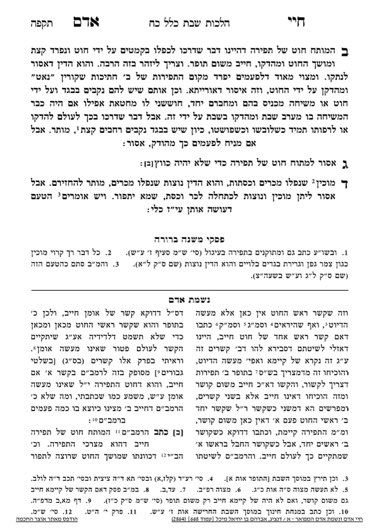We are beginning siman 2. The Chayei Adam begins with a case of a garment which has pleats in it. The pleats were stitched in place, but they began to come loose and the person wants to re-stitch them back into place. The Chayei Adam concludes that one would be chayav for tofeir. One of the achronim asks that if tofeir is defined as taking two distinct items and making them into one, how is this considered tofeir? He explains that when the pleats were originally stitched, there is no question that the stitching to create them is considered tofeir, because it is part of the process of making the garment into the desired garment. If so, restitching it will be chayav as well. Similarly, removing the stitches and spreading out the pleats will be chayav for koreiah.
The Chayei Adam gives an example of a garment which is made of several pieces of cloth stitched together, and the threads have become loose and are beginning to spread apart. The person wants to pull on the ends of the threads in order to tighten the stitches. The Chayei Adam writes that pulling on those threads will be a melacha deoraysa. Similarly, if the cloth has bunched up around a thread, it is an issur doeraysa to smooth out the thread.
If a garment has a drawstring that functions not only to help fit the garment properly, but also as part of making the appearance of the garment, then closing or opening the drawstring makes the garment more usable and according to the appearance a person desires, so it is assur to use the drawstring. We will clarify this point further in the upcoming shiur, be’ezras Hashem.
Summary
Adding, removing or fixing or tightening stitching that shapes the garment into its desired shape is considered tofeir or koreiah.
Cloth which has bunched up around a thread cannot be smoothed out. Similarly, manipulating a drawstring is assur, but we will clarify this point further in the upcoming shiur.



